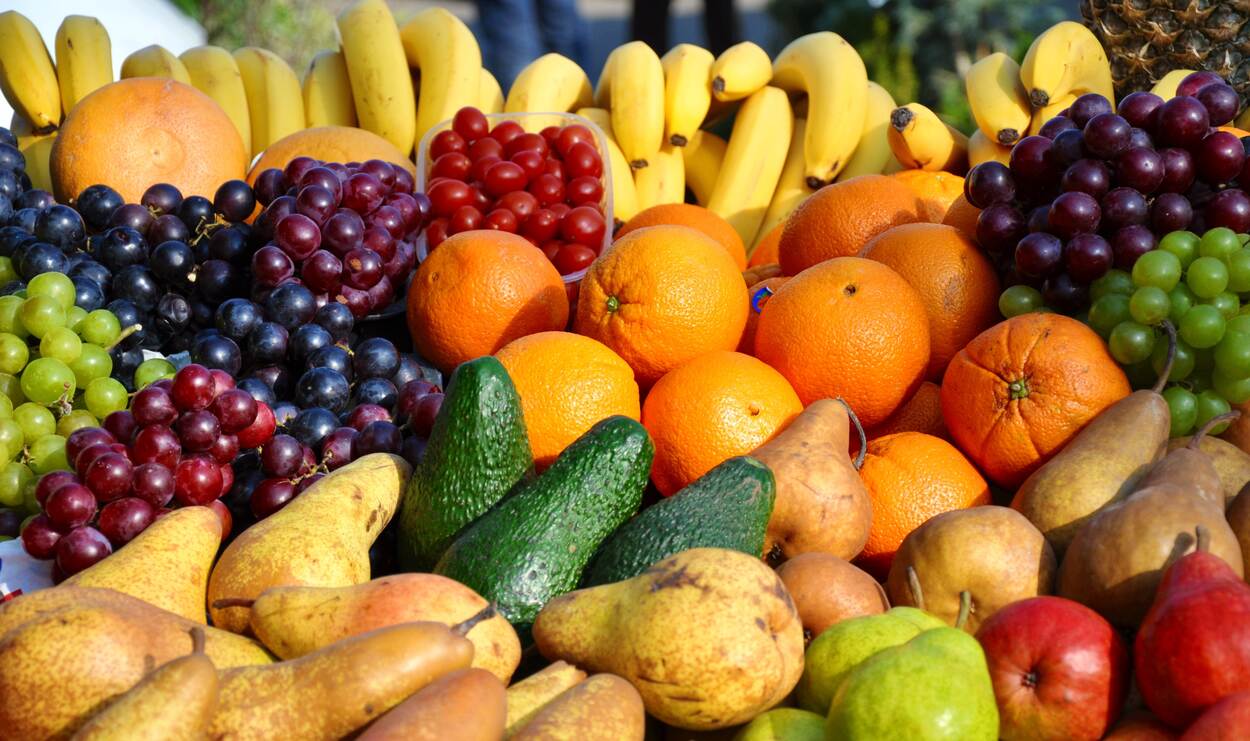The US fruit market demonstrated resilience in Q2 2025 with a valuation of USD 29.93 billion, despite facing significant challenges including declining domestic production, increasing import dependency, and evolving consumer preferences. Fresh fruit revenue reached USD 69.76 billion, reflecting a robust 4.16% annual growth rate driven by premium positioning and health-conscious consumption trends.
Executive Summary
The US fruit industry in Q2 2025 presents a complex landscape of opportunities and challenges. Market valuation reached USD 29.93 billion with fresh fruit revenue at USD 69.76 billion, yet domestic production continues its concerning decline at 8.2 million tons, down 2.5% from previous periods. This production shortfall is increasingly filled by imports, which reached 20.1 million tons and are projected to grow 10% annually.
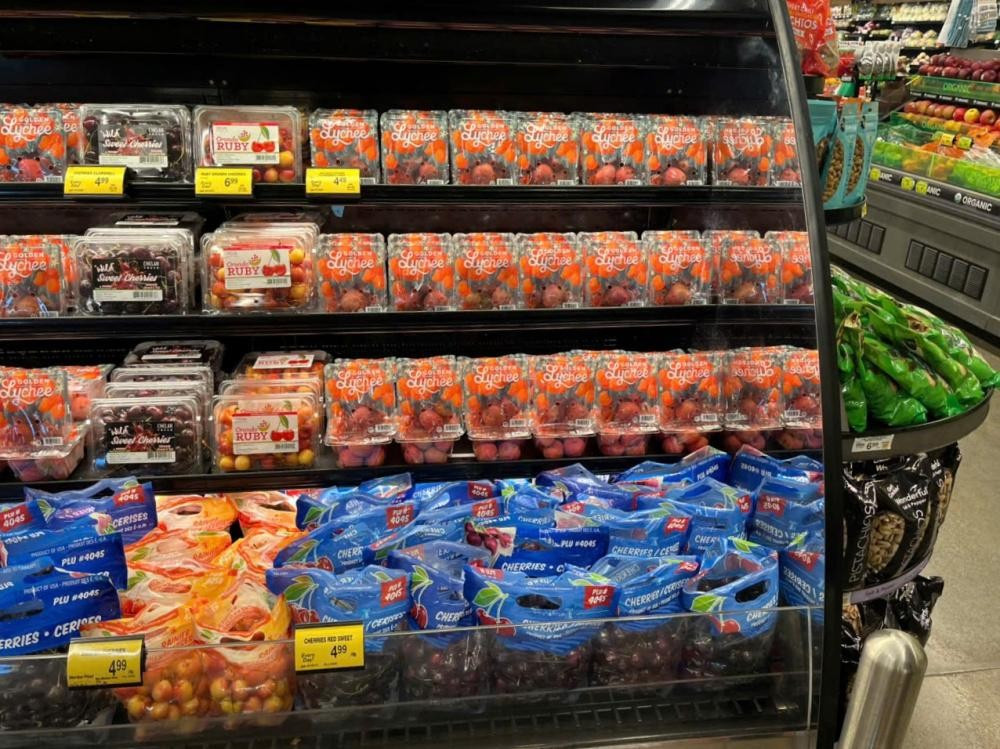
Key Market Dynamics:
California maintains its dominance with 45.2% of national production and USD 13.5 billion in value, followed by Washington at 18.3% and USD 5.5 billion. However, rising production costs—exemplified by California navel oranges costing USD 4,215 per acre in 2025, up 35% from 2020—are pressuring grower profitability and accelerating the shift toward imports.
Consumer Behavior Revolution:
A critical trend emerges in consumption patterns: 40% of adults and 29% of children now consume less than 25% of recommended fruit intake, while only 15% of adults and 23% of children meet federal dietary guidelines. This declining consumption, down nearly 20% since the early 2000s, contrasts sharply with growing demand for organic fruits (25% annual growth) and premium varieties (18% growth), indicating market polarization between health-conscious consumers and the broader population.
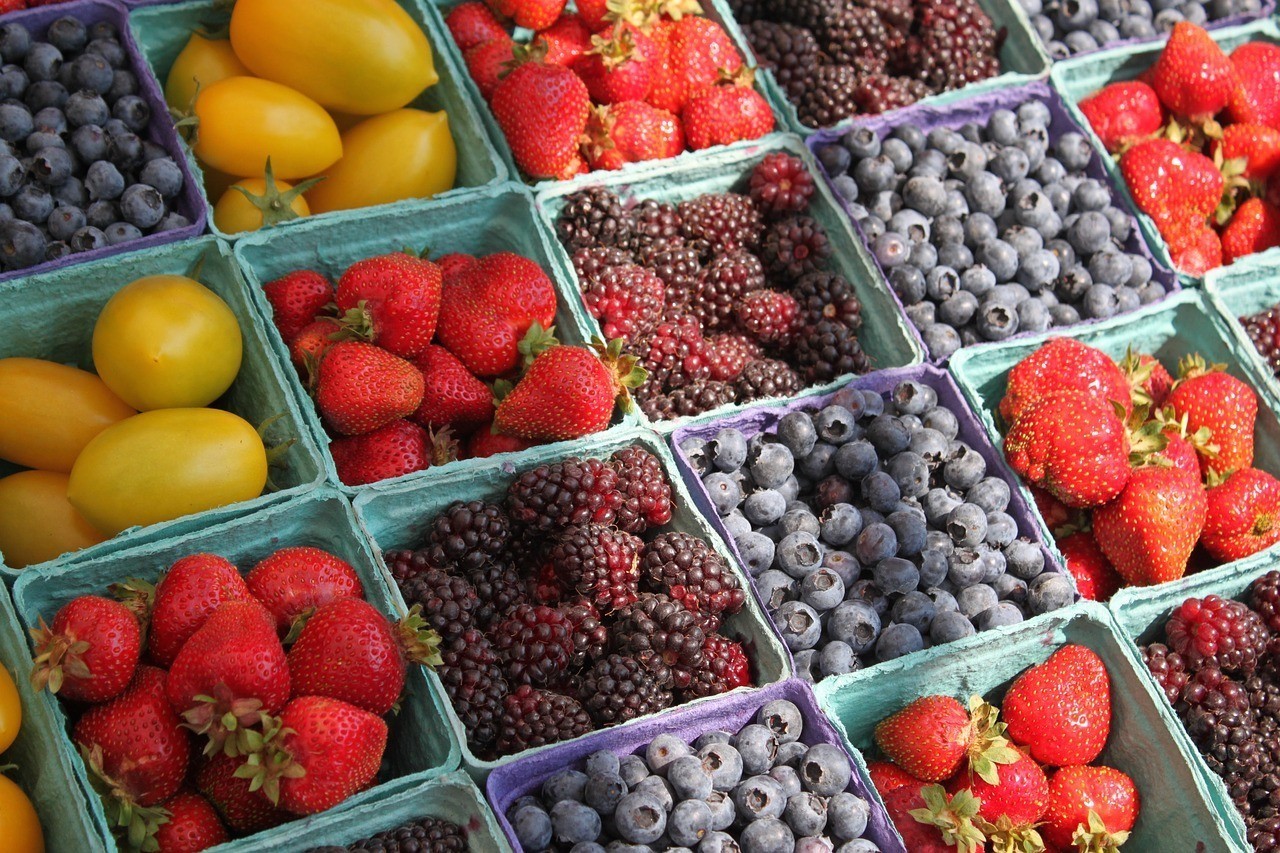
Technology Integration:
The industry is experiencing unprecedented technological transformation with climate control systems achieving 72% adoption, precision agriculture at 65%, and AI/ML quality control at 58%. Total technology investment exceeds USD 20 billion annually, with ROI typically achieved within 12-36 months, demonstrating clear value creation opportunities.
1. Market Overview in Q2 2025
1.1. Results
a. Total Industry
The US fruit market achieved USD 29.93 billion in production value during Q2 2025, with fresh fruit retail revenue reaching USD 69.76 billion annually. Despite value growth, production volumes declined to 8.2 million tons, reflecting ongoing structural challenges including labor shortages, rising production costs, and climate volatility affecting major growing regions.
The industry’s import dependency reached critical levels with 20.1 million tons imported versus 8.2 million tons produced domestically—a ratio of 2.45:1 that underscores America’s transformation from net fruit exporter to import-dependent market. Export volumes declined to 3.84 million tons, down 12% annually, as domestic producers struggle to compete with lower-cost international suppliers.
b. Market Segmentations
By Production Volume:
Grapes lead domestic production at 6.8 million tons (primarily wine grapes), followed by apples at 4.2 million tons and stone fruits at 2.4 million tons. However, citrus production (2.1 million tons) faces severe challenges, with Florida orange production hitting 95-year lows due to citrus greening disease and hurricane damage.
By Market Value:
Apples generate the highest market value at USD 5.2 billion despite production challenges, while grapes contribute USD 4.5 billion and citrus fruits USD 3.8 billion. Berries, though lower in volume (1.3 million tons), command premium pricing with USD 3.6 billion in value, reflecting consumer willingness to pay for perceived health benefits.
By Import Dependency:
Tropical fruits show 95% import dependency, berries 45%, citrus 35%, stone fruits 25%, grapes 15%, and apples only 8%. This distribution reveals strategic vulnerabilities in supply chain security and price volatility exposure.
c. Zones, Regional Analysis
California (45.2% Production Share):
Generating USD 13.5 billion in value, California specializes in citrus, grapes, and berries but faces escalating challenges. Production costs for navel oranges reached USD 4,215 per acre in 2025, up 171% since 2005, driven by minimum wage increases (USD 7.50 to USD 16.50), fuel costs, and input price inflation.
Washington (18.3% Share):
Contributing USD 5.5 billion primarily through apples and cherries, Washington benefits from favorable growing conditions and established export markets. Sweet cherry production is forecast at 260,000 tons in 2025, the largest crop in eight years.
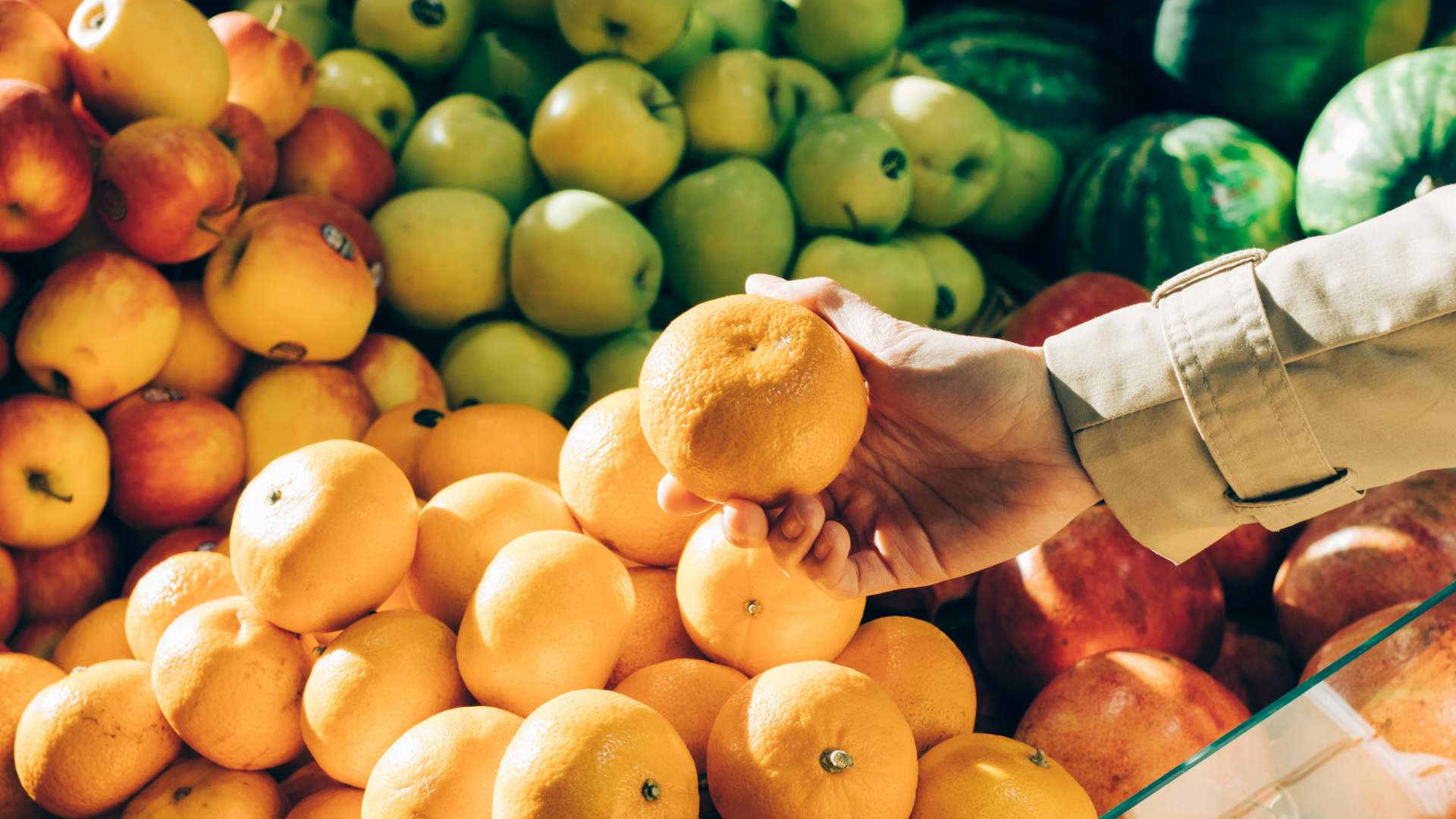
Florida (12.1% Share):
Despite USD 3.6 billion in value, Florida faces existential challenges with citrus production declining from 200 million boxes two decades ago to fewer than 16 million boxes due to huanglongbing (citrus greening) and weather events.
New York (8.7% Share):
Generating USD 2.6 billion through apples and grapes, New York emphasizes premium positioning and direct-to-consumer sales to offset higher production costs versus western competitors.
Michigan (6.2% Share):
Contributing USD 1.9 billion primarily through cherries and berries, Michigan benefits from Great Lakes climate moderation but faces labor challenges and competition from imported alternatives.
1.2. Analysis
a. Tendency and Reasons for Segmentation and Major Zones in Q2 2025
The Q2 2025 market revealed accelerating consolidation trends, with larger operations gaining market share while smaller producers exit due to cost pressures and regulatory compliance requirements. California’s dominance reflects scale advantages, climate diversity, and infrastructure investments, yet rising costs threaten long-term competitiveness.
Regional specialization intensified as producers focus on crops with comparative advantages. Washington’s apple industry leverages storage technology and export logistics, while Florida’s citrus sector considers transitioning to juice imports due to production challenges. This specialization increases efficiency but creates supply chain vulnerabilities.
b. Natural Impacts
Climate change effects dominated Q2 2025 performance across all regions. Florida experienced continued hurricane damage and citrus greening pressure, reducing orange production to historical lows. California faced water scarcity challenges, with precision irrigation adoption reaching 65% to maintain productivity under stress conditions.
Extreme weather events caused estimated losses of USD 2.8 billion annually across the industry, with heat waves affecting stone fruit quality and irregular precipitation patterns disrupting harvest timing. These challenges accelerated investment in climate-controlled growing environments and weather prediction technologies.
c. Economic Impacts
Inflation significantly impacted the fruit industry in Q2 2025, with producer price indices rising 9% year-over-year for fruit and tree nuts. Labor costs increased substantially due to minimum wage adjustments and worker shortages, contributing to the 35% production cost increase observed in California citrus operations.
Interest rate environments affected capital investment decisions, with many producers deferring expansion plans while prioritizing efficiency improvements through technology adoption. Currency fluctuations influenced export competitiveness, with dollar strength reducing demand for US fruit in international markets.
d. Behavioral Factors (B2B and B2C)
B2B Market Evolution:
The wholesale fruit market experienced digital transformation acceleration, with platforms enabling direct producer-to-retailer connections. Supply chain transparency requirements drove blockchain adoption (28%), though implementation remains limited due to cost and complexity concerns. Buyers increasingly prioritize sustainability credentials and traceability in sourcing decisions.
B2C Consumer Behavior:
Consumer fruit purchasing revealed stark polarization. Health-conscious consumers (78% of market) drive demand for organic (15% market share, 25% annual growth) and premium varieties, while 40% of adults consume inadequate fruit quantities. E-commerce penetration reached 12% annually, with subscription services and direct-to-consumer models gaining traction among affluent urban demographics.
Convenience-focused products showed 12% annual growth as busy lifestyles drive demand for pre-cut, packaged, and ready-to-eat options. However, price sensitivity increased among lower-income segments, contributing to overall consumption decline trends.
2. Market Forecast in Q3 & Q4/2025
2.1 Forecast Revenue: Global & Major Zones
National Market Projections:
The US fruit market is projected to reach USD 30.7 billion in Q3 2025 and USD 31.5 billion in Q4 2025, maintaining the 2.07% annual growth trajectory. Fresh fruit revenue is forecasted at USD 71.2 billion (Q3) and USD 72.8 billion (Q4), supported by premium positioning and value-added processing growth.
Production Volume Forecasts:
Domestic production is expected to decline further to 8.0 million tons (Q3) and 7.8 million tons (Q4), reflecting ongoing land conversion, rising costs, and climate challenges. This production decline necessitates increased imports, projected at 21.0 million tons (Q3) and 21.8 million tons (Q4).
Regional Performance Expectations:
California production faces continued pressure from drought conditions and cost inflation, while Washington apple harvest shows promise with favorable weather conditions. Florida citrus production may stabilize at historically low levels as growers adapt to endemic citrus greening.
2.2. Analysis
Price forecasts indicate continued upward pressure across most fruit categories through Q4 2025. Apples are projected to increase from USD 0.75/lb (Q2) to USD 0.82/lb (Q4), reflecting supply constraints and quality premiums. Cherry prices peak in Q3 at USD 4.75/lb before moderating to USD 4.20/lb in Q4 due to seasonal availability.
Citrus prices show downward trajectory from USD 0.68/lb to USD 0.67/lb as Florida production challenges are offset by increased California Valencia oranges and import growth. Strawberry prices demonstrate seasonal volatility, rising in Q3 to USD 3.05/lb before declining to USD 2.85/lb in Q4.
The import dependency trend accelerates through Q4 2025, with total imports projected to reach 38.6% of US fruit supply by year-end. This growing reliance on international suppliers creates both cost advantages and supply chain vulnerabilities that industry participants must carefully manage.
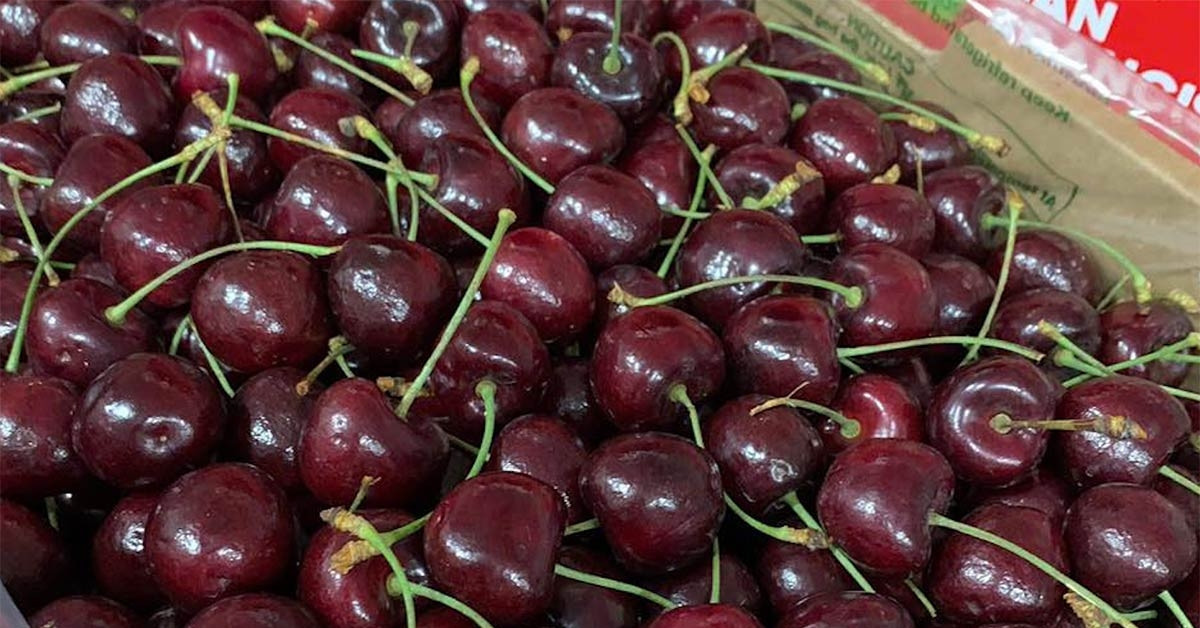
3. Innovations (Trends in Long & Short Term)
3.1. Technology Transformation (Biotechnology; Digital Revolution)
Precision Agriculture Leadership:
Precision agriculture achieved 65% adoption in the US fruit industry with USD 3.2 billion in annual investment. Advanced systems integrate soil sensors, weather monitoring, and satellite imagery to optimize irrigation, fertilization, and pest management. ROI typically achieved within 18 months through reduced input costs and improved yields.
AI and Machine Learning Integration:
AI/ML quality control systems reached 58% adoption, enabling 90% accuracy in defect detection and quality grading. Predictive analytics applications include yield forecasting (85% accuracy up to 6 months ahead), disease prediction, and harvest timing optimization. Investment totals USD 2.1 billion annually with 15-month average ROI.
Automation and Robotics:
Automated harvesting systems achieved 35% adoption despite USD 4.5 billion annual investment requirements. ROI extends to 36 months due to high capital costs, but labor shortage pressures drive continued adoption. Advanced systems demonstrate 75% efficiency compared to manual harvesting for suitable crops.
Climate Control Innovation:
Climate control systems lead technology adoption at 72% with USD 6.5 billion annual investment, achieving 12-month ROI through yield improvements and quality consistency. Advanced greenhouse and tunnel systems enable year-round production and protection from weather extremes.
3.2. Environment (ESG; Sustainability; Green Initiatives)
Water Conservation Leadership:
Water management technologies achieved critical importance with 95% efficiency improvements through precision irrigation, soil moisture monitoring, and drought-resistant rootstock adoption. California’s water scarcity drives innovation, with drip irrigation and sensor-based systems becoming standard practice.
Carbon Footprint Reduction:
The fruit industry achieved 78% adoption of carbon footprint reduction programs, including renewable energy integration (35% of facilities), precision agriculture reducing input usage, and efficient cold chain management. Organic production reached 12.5% market share with 25% annual growth.
Sustainable Packaging Innovation:
Biodegradable packaging adoption reached 28% market penetration with 5.5% annual growth as retailers and consumers demand environmental responsibility. Innovation focuses on plant-based materials and reduced plastic usage while maintaining food safety and shelf life requirements.
Regenerative Agriculture:
Regenerative agriculture practices achieved 45% adoption, emphasizing soil health improvement, biodiversity enhancement, and carbon sequestration. These practices demonstrate 25% reduction in greenhouse gas emissions while improving long-term productivity and resilience.
4. Strategic Recommendations
Technology Investment Prioritization:
Companies should prioritize climate control systems (72% adoption, 12-month ROI) and precision agriculture (65% adoption, 18-month ROI) as foundational investments. AI/ML quality control provides competitive advantages through consistent product quality and brand differentiation. Blockchain traceability, though currently at 28% adoption, positions companies for regulatory compliance and premium market access.
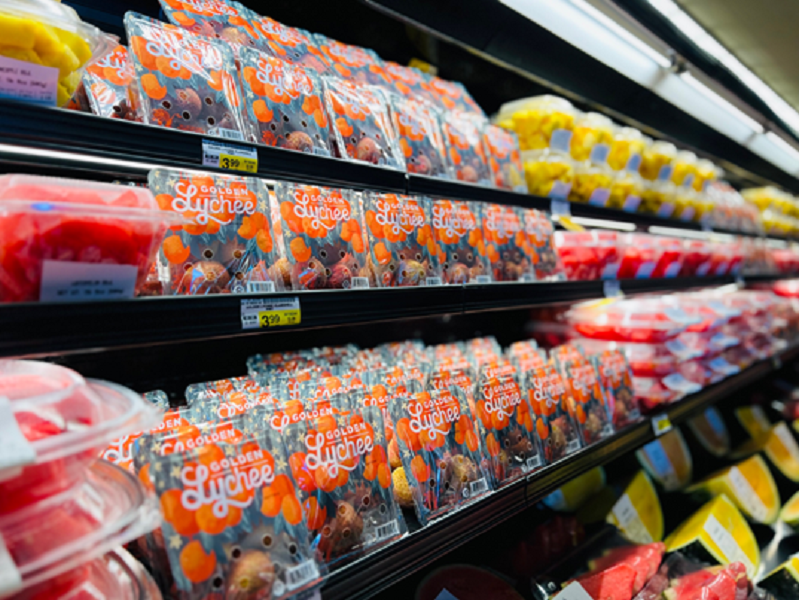
Market Diversification Strategy:
Given declining domestic production and increasing import dependency, US companies should consider three strategic approaches: vertical integration with international suppliers, premium positioning to capture value despite higher costs, or diversification into processing and value-added segments showing 8.6% annual growth.
Regional Positioning:
California producers should focus on high-value crops and premium positioning to justify elevated production costs. Washington apple growers should leverage storage technology and export capabilities. Florida citrus operations should consider transitioning to processing or alternative crops while maintaining core competencies.
Consumer Market Segmentation:
Target health-conscious consumers (78% of market) with organic and premium varieties, while addressing the convenience segment (45% adoption) through processed and ready-to-eat products. Direct-to-consumer channels should be developed for premium positioning, while traditional retail focuses on volume and accessibility.
Sustainability Integration:
Environmental stewardship provides competitive advantages through cost reduction (water and energy efficiency), regulatory compliance, and consumer preference alignment. Carbon neutral commitments and regenerative agriculture practices position companies for future regulatory requirements and market preferences.
Risk Management Framework:
Diversify supply chains to reduce climate risk exposure, implement crop insurance strategies, and maintain flexible production systems enabling rapid crop rotation. Financial hedging against commodity price volatility and currency fluctuations protects margins in volatile environments.
5. Conclusion (Key Takeaways)
The US fruit market in Q2 2025 stands at a critical transformation point, balancing traditional agricultural excellence with modern challenges including climate change, cost inflation, and changing consumer preferences. While the market achieved USD 29.93 billion in value with positive growth trajectories, underlying structural challenges demand strategic adaptation.
Critical Success Factors:
Technology adoption emerges as the primary competitive differentiator, with climate control systems (72% adoption) and precision agriculture (65% adoption) providing measurable ROI and operational resilience. Companies achieving comprehensive digital transformation report superior performance in yield optimization, quality consistency, and cost management.
Market Structure Evolution:
The industry’s shift from net exporter to import-dependent market (2.45:1 import-to-production ratio) represents permanent structural change rather than temporary adjustment. Successful companies must adapt business models to leverage this reality through strategic partnerships, value-added positioning, or diversification into higher-margin segments.
Consumer Market Polarization:
The stark divide between health-conscious consumers driving premium segment growth (organic fruits at 25% annual growth) and the 40% of adults consuming inadequate fruit quantities creates distinct strategic opportunities. Companies must choose between premium positioning for affluent health-focused segments or accessibility strategies addressing broader population needs.
Regional Competitive Dynamics:
California’s continued dominance (45.2% production share, USD 13.5 billion value) faces sustainability challenges from rising costs and water scarcity. Washington, Florida, and other regions must leverage specific advantages—whether climate, infrastructure, or market proximity—while addressing universal challenges of labor shortages and climate volatility.
Investment Imperatives:
The industry’s USD 20 billion annual technology investment demonstrates commitment to modernization and efficiency. Climate control systems, precision agriculture, and AI-powered quality control provide clear ROI paths (12-18 months typically), while blockchain traceability and automated harvesting represent longer-term competitive positioning investments.
Sustainability Integration:
Environmental initiatives have evolved from corporate responsibility programs to operational necessities. Water conservation (95% efficiency improvements), carbon footprint reduction (78% company adoption), and regenerative agriculture (45% adoption) provide cost savings, regulatory compliance, and consumer preference alignment simultaneously.
The US fruit market’s future success depends on strategic adaptation to permanent structural changes rather than resistance to evolving market realities. Companies that integrate technology adoption, sustainability practices, and consumer preference alignment while maintaining operational excellence will capture disproportionate value in the projected USD 31.5 billion market by Q4 2025.
Success requires acknowledging that traditional approaches face fundamental challenges while embracing innovation, efficiency, and market-responsive strategies. The industry’s resilience and innovation capacity position it well for continued growth and adaptation, provided stakeholders make necessary strategic adjustments to address evolving market dynamics effectively.
About us
Try it for yourself. Freshdi.com
Global Agri B2B Marketplace.

